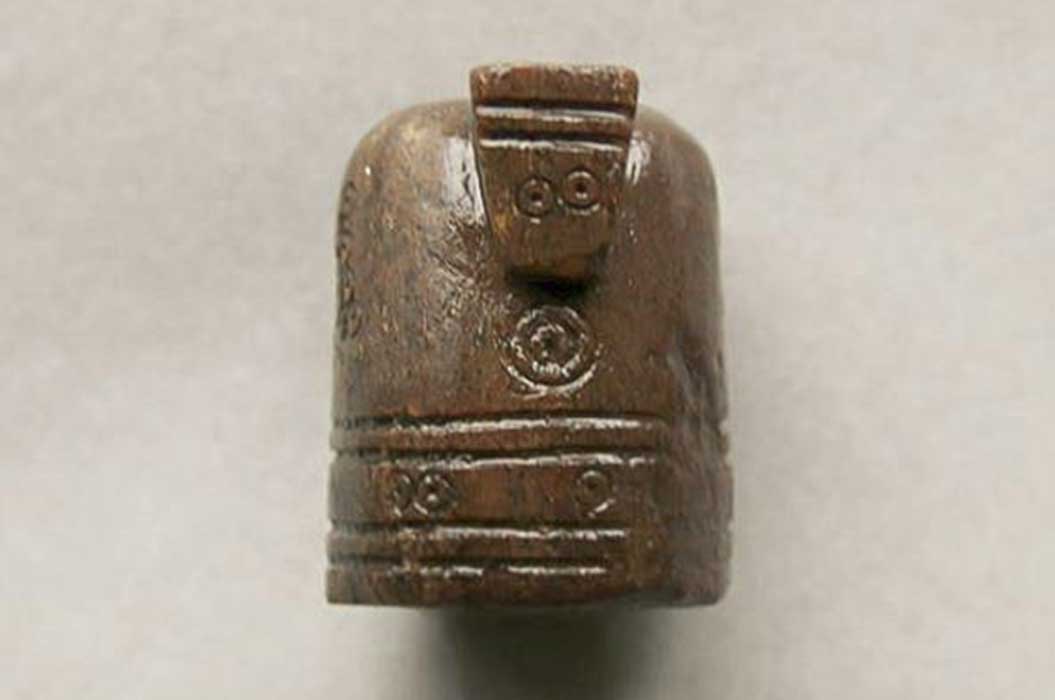Richly Adorned Arabic Influenced Chess Piece Unearthed in Norway
Archaeologists from the Norwegian Institute of Cultural Heritage Research (NIKU) have recently discovered a rare and richly decorated Arabic-inspired chess piece in Tønsberg.
Arabic Inspired Chess Piece in Norway
As the experts suggest, the game piece that is made mostly out of antler, would have been used to play what was called shatranj, also known as chess these days. “There is likely some lead inside the piece to help it stand firmly on the chessboard," a team of archaeologists from the Norwegian Institute for Cultural Heritage Research (NIKU) announced in a statement as NIKU reports. The archaeologists discovered the piece inside a house dating back to the 13th century and were fascinated by the unusual and luxurious decoration of the Arabian object. As NIKU reports, the design of the piece has an intellectual shape and is created based on Islamic art, where human figures are almost never portrayed according to project manager for the excavation in NIKU, Lars Haugesten.

The chess or shatranj piece has a nose or snout, appearing to be a horse. (Image: Lars Haugesten, NIKU)
The piece is created from antler and is cylindrical with a projecting nose on top. The height of the valuable object is around 30 mm while its diameter is 26 mm. Experts suggest that lead was most likely inserted in the middle of the piece when it was created in order to make it stand firmly on the chessboard. Interestingly, the piece is luxuriously adorned with circles on the bottom, many dotted circles on the sides and at the top, while the protruding snout on the top has two dotted circles. “No previous archaeological finds from Tønsberg have such details, which emphasizes that this chess piece is a unique object,” says Haugesten via NIKU.
- The Icelandic Theory: Experts Challenge Establishment Dogma to Reveal History of Ivory Vikings
- The Missing Pieces: Unraveling the history of the Lewis Chessmen

The medieval chess piece was unearthed in Anders Madsen gate in Tønsberg, Norway. (Image: Thomas Wrigglesworth, NIKU)
Chess Piece is a Knight
The newly found piece from Tønsberg appears to be a horse, which today we know as a knight. “In Norway, some chess pieces from the Middle Ages have been found, but few similar knights. For example, in Bergen, more than 1,000 gaming pieces have been found. Of these, there are some chess pieces but only 6 abstract knights,” says Haugesten via NIKU. And adds, “Their shape is similar to the piece from Tønsberg, but the size of the pieces varies. The decor on the pieces is not the same as that from Tønsberg, yet the pieces from Bergen both have dotted circles and ordinary circles.”

The piece is made from antler and is covered with circular designs. (Image: Lars Haugesten, NIKU)
How Chess Entered Europe
The exact location, time and method of the entry of chess, or rather its immediate precursor Shatranj, into western Europe is unknown, however linguistic evidence suggests that it was almost certainly transmitted via the Arab world. Philological evidence points to an earlier date than archaeological and literary evidence currently suggests, indicating that the game entered Europe perhaps as early as 800 AD. In the beginning chess was only played by peers at the court. The only exception is Ströbeck, known as the "chess village" in Germany, where chess became popular among the farmers in the early 11th century. “The oldest find in the Nordic region is from Lund, Sweden, dating back to the last half of the 12th century. That piece is similar to the find from Tønsberg,” says Haugesten via NIKU.
- Did These Filed and Grooved Teeth Belong to a Viking Elite Warrior?
- The Thirteen Legendary Treasures of Britain

Chess Players, Cairo, by Stanisław Chlebowski (1835–1884) (Public Domain)
Ultimately, Haugesten noted that the piece was found during excavation works that were launched in the autumn of 2017 by the Norwegian Institute for Cultural Heritage Research (NIKU). The mission conducted an archaeological excavation at Anders Madsens gate 3 in the center of Tønsberg. During the excavation many houses and streets were unearthed, while along with the chess piece, archaeologists also discovered ceramics, metal, combs, antlers and a whole range of artifacts that can be linked to the Middle Ages.
Top image: The medieval chess piece found in Norway in December 2017. (Image: Lars Haugesten, NIKU)




















Comments
I just don't see the Arabic influence. The designs I see were being used in Europe well before Islam came on the scene.the birth of Muhammed. What am I missing?